By Robert Boostanfar, MD, FACOG Board Certified, Reproductive Endocrinology and Infertility
Introduction
 The last several decades have propelled assisted reproduction technologies (ART) into one of the most controversial and revolutionary medical therapies in the United States and around the world. The impact is so profound that today nearly 1% of babies born in the United States are conceived by in-vitro fertilization (IVF). The last few years have added focus and research on improving pregnancy outcome, and furthermore in establishing and defining health consequences from the utilization of these techniques. It has also allowed evaluation of the impact of health related issues upon the success of assisted reproduction. The focus of this summary is to update the reader on leiomyomata (fibroids of the uterus), hydrosalpinges (blocked fallopian tubes), smoking and decreased ovarian reserve on ART outcomes. Moreover, it will serve to examine the recent data and controversies on perinatal outcomes and birth defects as related to ART.
The last several decades have propelled assisted reproduction technologies (ART) into one of the most controversial and revolutionary medical therapies in the United States and around the world. The impact is so profound that today nearly 1% of babies born in the United States are conceived by in-vitro fertilization (IVF). The last few years have added focus and research on improving pregnancy outcome, and furthermore in establishing and defining health consequences from the utilization of these techniques. It has also allowed evaluation of the impact of health related issues upon the success of assisted reproduction. The focus of this summary is to update the reader on leiomyomata (fibroids of the uterus), hydrosalpinges (blocked fallopian tubes), smoking and decreased ovarian reserve on ART outcomes. Moreover, it will serve to examine the recent data and controversies on perinatal outcomes and birth defects as related to ART.
Leiomyomata and ART
The size and location of fibroid tumors are particularly related to the ultimate effect of ART outcomes. Screening studies of the uterus including saline infusion sonography, hysteroscopy and hysterosalpingography assist clinicians to determine if the tumor involves the endometrial (uterine) cavity. Routinely, couples undergoing ART will have one or more of these procedures to elucidate whether a leiomyoma is either in the cavity or distorting or impinging on the uterine cavity. Based on the available evidence, subserosal fibroids (outside the uterine cavity) most likely have a minimal impact in affecting implantation and pregnancy rates. However, submucosal fibroids (within the uterine cavity) are likely to have a negative impact on implantation and pregnancy rates. The controversy lies in intramural fibroids (within the muscle of the uterus), with some reports having impaired pregnancy rates (Stovall et al. Human Reproduction 1998) and others finding no effect (Surrey E. et al Curr Opin Obstet Gynecol 2003). A patient’s symptom, reproductive history and a careful review of screening studies is necessary in choosing which patients will benefit most from surgical intervention.
Hydrosalpinges and ART
Closed and dilated fallopian tubes, commonly referred to as a hydrosalpinges, may vary in size and amount of fluid in which they contain. They are typically diagnosed by ultrasonography or hystersalpingography and occasionally are found at laparoscopy. Studies have reported an approximately 50% reduction in both clinical pregnancy rates and delivery rates compared to age matched cohorts undergoing ART without a hydrosalpinx (Strandell B, Hum Reprod Update 2000). The mechanism by which these structures diminish success is thought to be related to the toxic effect of this fluid on the embryo or on endometrial receptivity. A recent meta-analysis of several prospective randomized trials have concluded that surgical removal of these structures significantly increased the odds of IVF resulting in a live birth (Johnson et al. Cochrane Review 2004).
As such, there has been greater attention given to the surgical management of this condition; either to enhance IVF outcomes, or for patients in whom ART is not an option, to consider the less successful and desirable option of surgical tuboplasty to repair the fallopian tubes.
Cigarette Smoking and ART
The average age of menopause in the United States is approximately 51 in non-smokers and 49 in smokers. Cigarette smoke has been thought to be responsible for more rapid follicular atresia (egg loss), resulting in earlier ovarian senescence. With respect to IVF outcome, there are data that have suggested that smoking reduces the pregnancy rate by approximately 50% (Van Voorhis et al. Obstet Gynecol 1996). The exact mechanism is unknown, but it is believed that it may have a direct toxic effect on oocyte and subsequent embryo health. It is generally recommended that patients stop smoking for as long as possible before undergoing ART.
Decreased Ovarian Reserve and ART
Diminished ovarian reserve is associated with a poor response to controlled ovarian hyperstimulation and subsequently a reduced number and quality of oocytes typically resulting in fewer embryos and lower pregnancy rates with ART. Numerous attempts at quantitatively establishing a diagnosis by early follicular FSH and Estradiol testing, Inhibin testing, Mullerian Inhibiting Substance and basal antral follicle counts have been reported. Provocative ovarian testing by the clomiphene citrate challenge test has also been used to counsel patients with respect to outcomes after ART. Although some controversy does still remain as to which test or combination of tests is the best predictor of ART outcome, most Reproductive Endocrinologists would agree that a basal FSH between 10-20 mIU/ml on Day 2, 3 or 4 is associated with a reduced probability of pregnancy after ART. These tests should be utilized to discuss prognoses with patients before ART is initiated.
Perinatal Outcomes and ART
Well controlled trials evaluating this facet of IVF outcome are not available to date. In lieu of this, many cohort trials and one meta-analysis has attempted to evaluate pregnancy outcomes of singleton gestations while attempting to control for maternal age and parity (Jackson et al. Obstet Gynecol 2004). The study suggested that IVF conceived singletons have a twofold increased mortality rate, low birth weight and preterm delivery compared with spontaneously conceived singletons. The authors also suggested that this study group may also be at increased risk for gestational diabetes, placenta previa and pre-eclampsia. The cause for this potential risk is unclear. There is debate as to whether ovarian stimulation or laboratory embryo culture could contribute to subsequent pregnancy outcome. In contrast, it is possible that this may be a cohort of women with infertility who have a fundamental medical condition that predisposes them to such outcome, and that the mechanism by which they conceived is not a cause but rather an association.
Birth Defects and ART
Once again with respect to birth defects there is debate whether studies can clearly establish that there is an increased risk of birth defects with ART. Studies are inconclusive, with one U.S. study suggesting that 6.2% of IVF conceived offspring were diagnosed with a major birth defect, compared with a rate of 4.4% among a matched cohort of spontaneously conceived children (Olson et al. Fertil Steril 2005). On the contrary, a study from Belgium and one from Denmark reported no significant increase in risk (Dhont et al. 1999 and Westergard et al. 1999). Unfortunately, with population based studies there may be many confounding effects including age, multiple gestation, classification of birth defects and indications for ART. The major malformation rates with ICSI, as a specific technology of ART, has also been implicated. In one of the largest studies to date, the rate of malformations after ICSI was 8.7% compared to 6.1% in the control group (Katalinic et al. 2004). Ultimately, patients need counseling regarding the possible increased risk among couples undergoing ART with or without ICSI, regardless of whether this is a cause and effect relationship or an association.
Conclusion
Despite the many factors that may ultimately affect the success of ART resulting in a healthy pregnancy, patients and clinicians can work together with their colleagues in Obstetrics to improve patient health before and after ART. Whether it is patient education regarding lifestyle factors and diet, or even surgical correction of pelvic pathology, the evidence is mounting that clinicians can and should optimize patient characteristics before, during and after ART. Finally, patients should be counseled as to the potential risk of ART so that they may make an informed decision about their care toward building their families.

